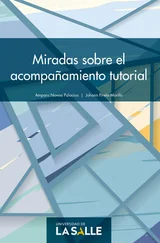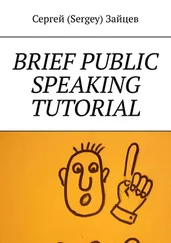A Quick OpenGL Tutorial
Здесь есть возможность читать онлайн «A Quick OpenGL Tutorial» весь текст электронной книги совершенно бесплатно (целиком полную версию без сокращений). В некоторых случаях можно слушать аудио, скачать через торрент в формате fb2 и присутствует краткое содержание. Жанр: Программирование, на английском языке. Описание произведения, (предисловие) а так же отзывы посетителей доступны на портале библиотеки ЛибКат.
- Название:A Quick OpenGL Tutorial
- Автор:
- Жанр:
- Год:неизвестен
- ISBN:нет данных
- Рейтинг книги:4 / 5. Голосов: 1
-
Избранное:Добавить в избранное
- Отзывы:
-
Ваша оценка:
- 80
- 1
- 2
- 3
- 4
- 5
A Quick OpenGL Tutorial: краткое содержание, описание и аннотация
Предлагаем к чтению аннотацию, описание, краткое содержание или предисловие (зависит от того, что написал сам автор книги «A Quick OpenGL Tutorial»). Если вы не нашли необходимую информацию о книге — напишите в комментариях, мы постараемся отыскать её.
A Quick OpenGL Tutorial — читать онлайн бесплатно полную книгу (весь текст) целиком
Ниже представлен текст книги, разбитый по страницам. Система сохранения места последней прочитанной страницы, позволяет с удобством читать онлайн бесплатно книгу «A Quick OpenGL Tutorial», без необходимости каждый раз заново искать на чём Вы остановились. Поставьте закладку, и сможете в любой момент перейти на страницу, на которой закончили чтение.
Интервал:
Закладка:
OK, so now you (hopefully) know how to move stuff around using OpenGL, lets do one more thing: depth testing. This is the process of determining what falls in front of what…in other words, is the house in front of the dog or is the dog in front of the house? This may sound trivial at first, but in order to get realistic looking scenes we usually use something called a z-buffer, which tests each pixel to see if it should is unhidden and should therefore be drawn. This would normally be a big to-do, but OpenGL is nice enough to handle all the details for us. Be warned though: unless you have a video accelerator with a lot of video memory, z-buffering will slow down rendering immensely. Z-buffers can make for really cool effects (such as objects passing through other objects), but watch out for the performance hit. That being said, applying a z-buffer to your scene is easy; first, put a call to glEnable in your initialization, like so:
glEnable(GL_DEPTH_TEST);
Then, clear your z-buffer at the end of every frame. You can do this at the same time you clear your drawing window, like so:
glClear(GL_COLOR_BUFFER_BIT | GL_DEPTH_BUFFER_BIT);
Simple, eh? Well now we have depth-cued perspective motion… in other words, your resume is stacked and you're rearing to go! Lets continue on to the final example:
/**********************************************************************/
/********************************************************************/
/* Example 3: A fully interactive 3D world with OpenGL */
/********************************************************************/
#include
#include
#include
#include /* GLU extention library */
void init(void);
void display(void);
void keyboard(unsigned char, int, int);
void resize(int, int);
void drawcube(int, int, int);
int is_depth; /* depth testing flag */
int main (int argc, char **argv) {
glutInit(&argc, argv);
glutInitDisplayMode(GLUT_DOUBLE | GLUT_RGB);
glutInitWindowSize(600, 600);
glutInitWindowPosition(40, 40);
glutCreateWindow("The Cube World");
init();
glutDisplayFunc(display);
glutKeyboardFunc(keyboard);
/* this time we're going to keep the aspect ratio constant by trapping the window resizes */
glutReshapeFunc(resize);
glutMainLoop();
return 0;
}
void init(void) {
glClearColor(0.0, 0.0, 0.0, 0.0);
glEnable(GL_DEPTH_TEST);
is_depth = 1;
glMatrixMode(GL_MODELVIEW);
}
void display(void) {
if (is_depth) glClear(GL_COLOR_BUFFER_BIT | GL_DEPTH_BUFFER_BIT);
else glClear(GL_COLOR_BUFFER_BIT);
/* draw the floor */
glBegin(GL_QUADS);
glColor3f(0.2f, 0.2f, 0.2f);
glVertex3f(-100.0, 0.0, –100.0);
glColor3f(0.4f, 0.4f, 0.4f);
glVertex3f(-100.0, 0.0, 100.0);
glColor3f(0.6f, 0.6f, 0.6f);
glVertex3f(100.0, 0.0, 100.0);
glColor3f(0.8f, 0.8f, 0.8f);
glVertex3f(100.0, 0.0, –100.0);
glEnd();
/* draw 12 cubes with different colors */
drawcube(75, 57, 2);
drawcube(-65, –12, 3);
drawcube(50, –50, 1);
drawcube(-56, 17, 2);
drawcube(67, 12, 3);
drawcube(-87, 32, 1);
drawcube(-26, 75, 2);
drawcube(57, 82, 3);
drawcube(-3, 12, 1);
drawcube(46, 35, 2);
drawcube(37, –2, 3);
glutSwapBuffers();
}
void keyboard(unsigned char key, int x, int y) {
/* This time the controls are:
"a": move left
"d": move right
"w": move forward
"s": move back
"t": toggle depth-testing */
switch (key) {
case 'a':
case 'A':
glTranslatef(5.0, 0.0, 0.0);
break;
case 'd':
case 'D':
glTranslatef(-5.0, 0.0, 0.0);
break;
case 'w':
case 'W':
glTranslatef(0.0, 0.0, 5.0);
break;
case 's':
case 'S':
glTranslatef(0.0, 0.0, –5.0);
break;
case 't':
case 'T':
if (is_depth) {
is_depth = 0;
glDisable(GL_DEPTH_TEST);
} else {
is_depth = 1;
glEnable(GL_DEPTH_TEST);
}
}
display();
}
void resize(int width, int height) {
if (height == 0) height = 1;
glMatrixMode(GL_PROJECTION);
glLoadIdentity();
/* note we divide our width by our height to get the aspect ratio */
gluPerspective(45.0, width / height, 1.0, 400.0);
/* set initial position */
glTranslatef(0.0, –5.0, –150.0);
glMatrixMode(GL_MODELVIEW);
}
void drawcube(int x_offset, int z_offset, int color) {
/* this function draws a cube centerd at (x_offset, z_offset) x and z _big are the back and rightmost points, x and z _small are the front and leftmost points */
float x_big = (float)x_offset + 5;
float z_big = (float)z_offset + 5;
float x_small = (float)x_offset – 5;
float z_small = (float)z_offset – 5;
switch(color) {
case 1:
glColor3f(1.0,0.0,0.0);
break;
case 2:
glColor3f(0.0,1.0,0.0);
break;
case 3:
glColor3f(0.0,0.0,1.0);
break;
}
glBegin(GL_QUADS);
glVertex3f(x_small,10.0,z_big); /* front */
glVertex3f(x_small,0.0,z_big);
glVertex3f(x_big,0.0,z_big);
glVertex3f(x_big,10.0,z_big);
glVertex3f(x_big,10.0,z_small); /* back */
glVertex3f(x_big,0.0,z_small);
glVertex3f(x_small,0.0,z_small);
glVertex3f(x_small,10.0,z_small);
glVertex3f(x_big,10.0,z_big); /* right */
glVertex3f(x_big,0.0,z_big);
glVertex3f(x_big,0.0,z_small);
glVertex3f(x_big,10.0,z_small);
glVertex3f(x_small,10.0,z_small); /* left */
glVertex3f(x_small,0.0,z_small);
glVertex3f(x_small,0.0,z_big);
glVertex3f(x_small,10.0,z_big);
glVertex3f(x_small,10.0,z_big); /* top */
glVertex3f(x_big,10.0,z_big);
glVertex3f(x_big,10.0,z_small);
glVertex3f(x_small,10.0,z_small);
glVertex3f(x_small,0.0,z_small); /* bottom */
Интервал:
Закладка:
Похожие книги на «A Quick OpenGL Tutorial»
Представляем Вашему вниманию похожие книги на «A Quick OpenGL Tutorial» списком для выбора. Мы отобрали схожую по названию и смыслу литературу в надежде предоставить читателям больше вариантов отыскать новые, интересные, ещё непрочитанные произведения.
Обсуждение, отзывы о книге «A Quick OpenGL Tutorial» и просто собственные мнения читателей. Оставьте ваши комментарии, напишите, что Вы думаете о произведении, его смысле или главных героях. Укажите что конкретно понравилось, а что нет, и почему Вы так считаете.







